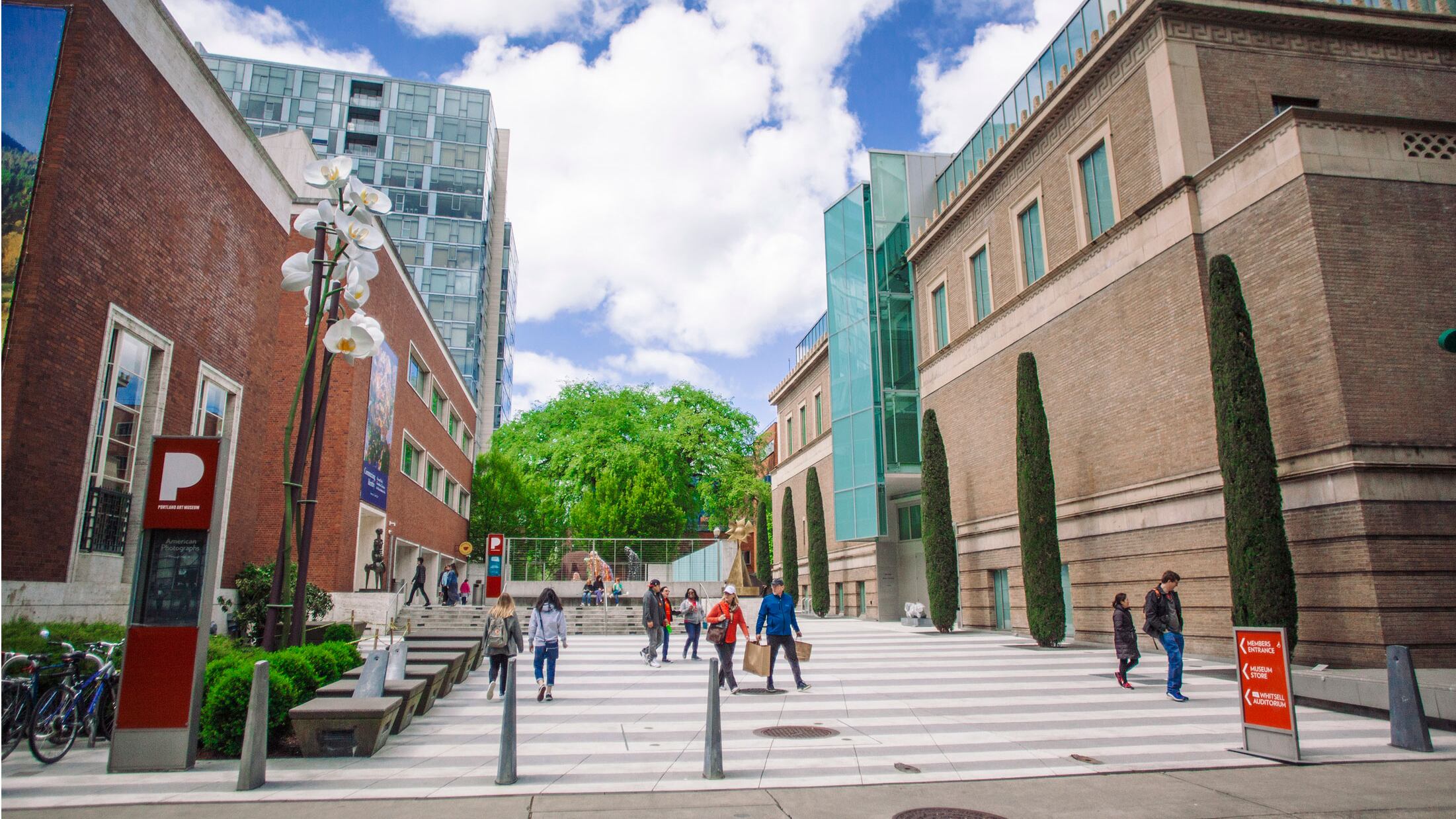Portland's largest arts nonprofit has put itself in an awkward position, raising more than $27 million for a project it lacks the legal permission to construct.
In October, the Portland Art Museum announced plans for its largest expansion since 2005: a $50 million project called the Rothko Pavilion in honor of late abstract expressionist painter Mark Rothko, who grew up in Portland and is one of the most significant American artists of the past 75 years.
The museum says it has raised funds for the project and the Rothko family has agreed to loan works from its collection. Groundbreaking is scheduled for 2018.
But the museum missed one key step: It doesn't have the legal right to build the expansion.
The Rothko Pavilion expansion plan would fill a space that is currently an open sculpture garden and public walkway between the two buildings on the museum's Southwest 10th Avenue campus: the main building and a former Masonic temple, which was acquired by the museum in 1992.

With its central location on the South Park Blocks and a board of directors that includes many prominent business leaders, the museum is a citadel of power—particularly of real estate clout. Among the large property owners who give their time and money to the museum are Melvin "Pete" Mark; Mark Goodman, who with his family owns 25 downtown blocks; and developer Jim Winkler.
That shared expertise makes the museum's predicament all the more surprising.
Nearly 50 years ago, the city of Portland gave the art museum the right to take over a portion of Southwest Madison Street, barring car traffic so the street could become a pedestrian walkway. But that gift came with a condition, placed in writing in 1968: "the vacated street will not be used for any purpose other than an open mall."
But the Rothko Pavilion project would place a two-story glass enclosure atop the site—in effect turning the sculpture garden and walkway into a new lobby for the museum.
That lobby would be open for the public to walk through, but only during museum hours. Bikes and pets would no longer be allowed to pass through at all.
Museum officials knew they would eventually need city permission to build the Rothko Pavilion on the walkway. But they didn't formally ask the City Council until halfway through the fundraising campaign.
Several observers of City Hall say they've rarely seen such a misstep.
"It's a pretty big error in judgment," says planning consultant Peter Finley Fry. "Control of the site is the most important critical first step. If you're going to spend millions, you [must] control the property legally before you start."
Winkler, the developer and museum board member, says the board did conduct informal discussions during the administration of then-Mayor Charlie Hales that "would indicate we had majority support" on the City Council.
"I think we will prevail," Winkler says. "It'd be a huge black eye for the city."
Concern about the proposal started last fall in the nearby Eliot Tower condo complex. By December, neighbors and bike advocates began organizing opposition.
As Bike Portland first reported last month, the Portland Commission on Disability and the city's pedestrian and bicycle advisory committees all oppose enclosing the walkway.
Geoff Wren, a neighbor and museum supporter, says the plan requires low-income residents of the neighborhood to make their way through a gleaming new lobby to get home.
"It seems almost absurd to suggest people in wheelchairs go through a museum lobby full of patrons, children and visitors," he says. "The Rothko Pavilion would be a fortress that is impermeable. I wonder if that's part of the idea, to create a structure that will make the homeless and poor feel unwelcome."
At an April 20 City Council meeting, the museum sought to amend the 1968 ordinance and obtain an easement allowing it to continue planning the Rothko Pavilion.
City Commissioner Dan Saltzman introduced the proposal, but acknowledged the plan would "spark some controversy and concern, and does fly in the face of some pretty specific central city policies around connectivity and accessibility."
At the meeting, 24 people, including some museum patrons, opposed granting the easement. One man compared the pavilion, which would eliminate the most direct path to a nearby streetcar stop, to President Trump's border wall and travel ban.
After hearing public testimony, Saltzman pulled the amended ordinance back from a vote, asking the museum to hold further discussions with his office.
Museum officials say the objections are overblown.
"The fundamental question is whether the inconvenience for those people is vastly outweighed by the benefits of having a much better museum," says J.S. May, chief advancement officer for the museum. "People can legitimately disagree on that issue."
Saltzman plans to reintroduce the museum's request for the amended ordinance and easement as soon as next month.
"Most people are able to walk the two blocks," May says. "When the project is done, the people who perhaps were not liking it would actually be stunned with the project. I would hope they would be able to move on to enjoying this."

